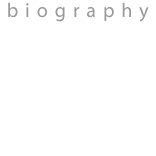| The Spirit of Myth, 2005 In Claude Levi-Stauss’s “Structural Study
of Myth,” the French anthropologist, in very analytical scientific
terms, breaks down the common denominators of mythology to demonstrate
how the function of myth remains consistent regardless of culture or
time. This timeless quality endures due to the fact that the story need
not be linear, with each of its parts being equally interchangeable.
Each of these stories functions as a collective dream with latent content.
The paintings in this exhibition function much in the way of traditional
mythology, without associating directly to specific cultural myths.
The work finds its roots in the intrigue of the unfolding story. From
primordial mythology through the twentieth century lore of J.R.R. Tolkien
and George Lucas, my fascination has always revolved around the art
of story-telling. “Goldmund knew a spot along the river where the water was not deep; it’s bed was covered with shards and all kinds of rubbish that fisherman had thrown there. . .From this spot, one could look through the streaming, crystal-threaded water and see the dark, vague bottom, see a vague golden glitter here and there, an enticing sparkle, bits of a broken plate perhaps or a worn out sickle . . . or it might be a mud fish . . .turning around down there, a ray of light catching for an instant the bright fins of its scales and belly - one could never make out what precisely was there, but there were always enchantingly beautiful, enticing brief vague glints of drowned golden treasure in the wet black ground. All true mysteries, it seemed to him, were just like this mysterious water; all true images of the soul were like this: they had no precise contour or shape: they only could be guessed at, a beautiful distant possibility that was veiled in many meanings. Just as something inexpressibly golden or silvery blinked for a quivering instant in the twilight of the green river depths, an illusion that contained, nevertheless, the most blissful promise . . . In the same way the lantern hung under a cart at night painting giant spinning shadows of wheel spokes on walls, could for a moment create a shadow play that seemed as the work of Homer. And one’s nightly dream were woven of the same unreal, magic stuff, a nothing that contained all the images in the world, an ocean in whose crystal the forms of all human beings, animals, and demons lived as ever ready possibilities.
|
-Jason Travers |


